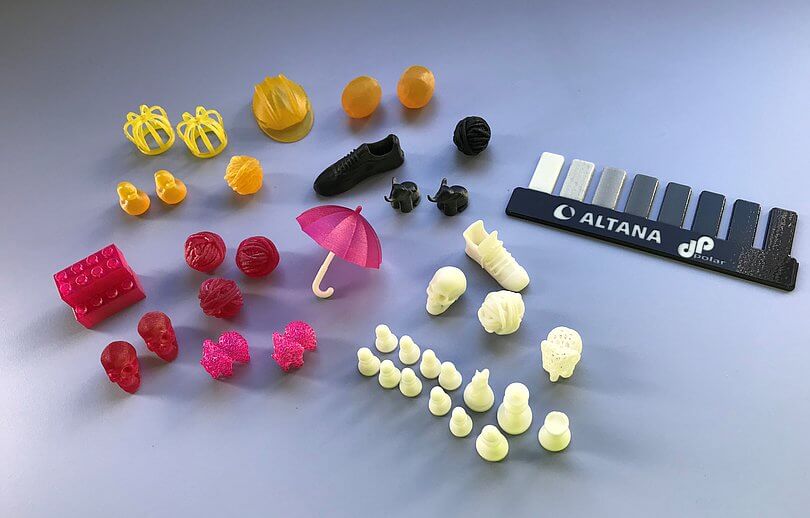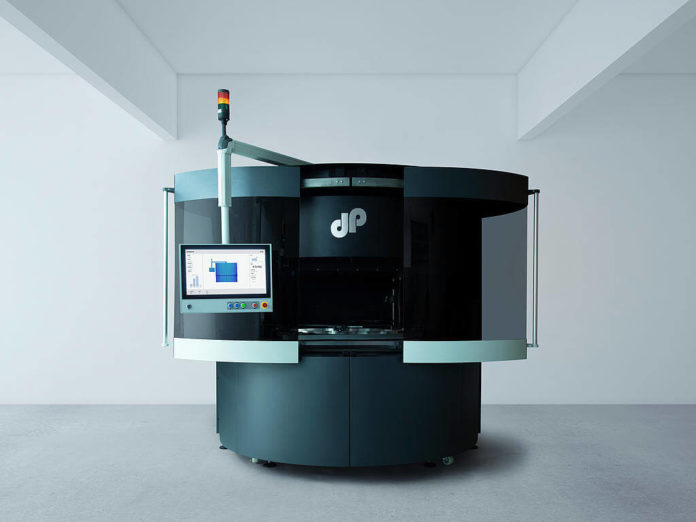3D printers with rotating print platforms, and other rotating elements, seem to be making somewhat of a return to the industry. At least based on a couple of exhibitors seen during Formnext 2019 last week.
German chemical group, ALTANA AG, and partner dp polar have announced the AMpolar i2 3D printer. ALTANA acquired a stake in dp polar in 2017 and the resulting material jetting system combines the know-how of the two enterprises.

Source: dp polar
Currently, three materials are offered by dp polar for the AMpolar i2 additive manufacturing system:
Cubic Ink Tough is described as a, “hard and tough material with balanced modulus and elongation. Multi-purpose material for prototyping and functional parts under moderate stress and strain.”
The Cubic Ink Flexible material is a, “flexible and soft material for applications that require stretching, bending or compression. It can be used for handles, damping and cushioning especially in multi-material parts.”
The final material is Cubic Ink Support, a water-soluble material, “for accomplishing complex geometries, high resolution, and clean edges. Compatible with Cubic Ink Tough and Flexible. Easily soluble in pure water at room temperature.”
The High-Speed Rotative Additive Manufacturing Process
The AMpolar i2 uses the company’s patented High-Speed Rotative AM Process (HSR). This system is based upon a rotating print platform and single-pass printing over a large build area of 2.0 m², and can produce a maximum build volume of 700 L. Both the large build volume and HSR point to the intended application for the AMpolar i2 – industrial series production.
Dr. Florian Löbermann, Managing Director of dp polar GmbH, “Our 3D production machine AMpolar i2 currently has the largest build area and the largest installation space in the field of material jetting.” The system is designed for users in the automotive, aerospace, and medical technology industries and brings “completely new possibilities for manufacturing their products” according to Dr. Löbermann.

Source: dp polar
Dr. Petra Severit, Chief Technology Officer of ALTANA AG explained, “In material development, we are focusing on our core competencies and at the same time expanding the application spectrum of our solutions in the highly innovative field of 3D printing.”
One example of applications for industrial production given by dp polar is in the field of 3D printed individually adapted orthoses. The company believes its system is highly suitable for producing such devices, for example, orthopedic prostheses, at high volumes and at an economical price point.
Technical specifications for the AMpolar i2 printing system:
|
Printing technology: |
Material jetting |
|
Printing process: |
High Speed Rotative Process (HSR) |
|
Printing width: |
Max. 420 mm |
|
Printing area: |
2.0 m² (scalable) |
|
Layer thickness: |
4-25 µm |
|
Build resolution (xyz): |
Up to 720 x 720 x 5,000 dpi |
|
Net build volume: |
700 liters |
|
Productivity: |
Max. 10 liters per hour |

















































